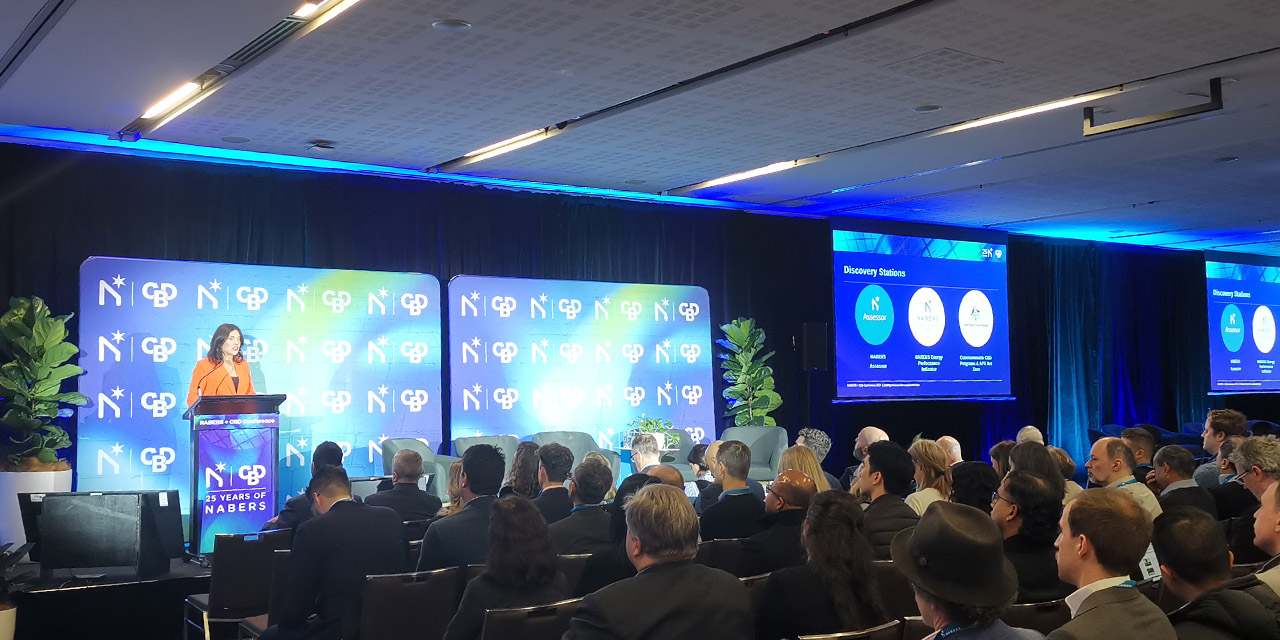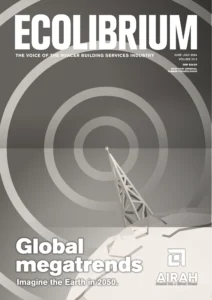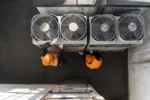Building on success

The NABERS/CBD Conference was an opportunity to celebrate 25 years of Australia’s building ratings system – and to look to the next quarter century. As a stakeholder member of the NABERS steering committee, AIRAH was pleased to attend.
Few would have predicted when NABERS began, that it would become a bigger international success story than the soap opera it was cheekily named after.
But 25 years after its launch, that certainly seems to be the case. NABERS is the envy of governments and industry bodies around the world, standardising the measurement of building performance and spurring a “race to the top” for property owners and operators.
The headline figures are impressive. In 2024, NABERS rated 77 per cent of Australia’s office space, as well as hundreds of shopping centres, apartments, hotels, hospitals and more. Over the life of the program, it has saved $1.7 billion dollars in energy bills and eliminated 11.57 million tonnes of carbon emissions.
So, the vibe at this year’s NABERS/CBD Conference, held on June 14 at UTS Sydney, was understandably upbeat. But it wasn’t all about looking back at a successful quarter century – it was about exploring the new challenges and discussing how to respond.
A major announcement
The day kicked off with news from Senator Jenny McAllister, Assistant Minister for Climate Change and Energy: Consultation had opened on a proposal to expand the Commercial Buildings Disclosure (CBD) Program.
The CBD Program requires office buildings to disclose their NABERS energy rating when they are sold or leased. It began in 2010 with a threshold of 2,000m2. This is now acknowledged as a watershed moment, driving a 35 per cent reduction in energy use in the buildings it covered. In 2017, the threshold was reduced to 1,000m2, bringing further energy savings.
AIRAH has long advocated for expanding the CBD Program to capture some of the troublesome mid-tier. A reduction in the floor area threshold is now on the table. So too is the inclusion of different building types and ownership structures, additional metrics, and the use of minimum energy performance standards for buildings that do not respond to disclosure.
The consultation is open until September 13 at consult.dcceew.gov.au/commercial-building-disclosure-cbd-expansion-consultation
Future themes
The NABERS CBD/Conference also delved into key topics for the built environment.
One panel looked at embodied carbon, with NABERS Katie Eyles highlighting the soon-to-be-launched embodied carbon tool. Industry is hoping that NABERS can bring the same certainty to embodied carbon measurement as it has to other aspects of building performance. ASBEC Executive Director Alison Scotland, meanwhile, took the opportunity to promote the launch of the ASBEC Embodied Carbon Working Group issues paper.
The electrification panel gave insights into how property owners are approaching the degasification challenge – and how the NABERS system will support this major shift in our buildings. Annabel McFarlane, Head of Strategic Research – Australia, JLL noted that although all-electric buildings will increasingly become more attractive for tenants, location and the quality of the building are still paramount. She advised property owners to plan for electrification, but to prioritise investment in amenity.
The official program finished with a treat for attendees – a live recording of the Let Me Sum Up podcast with EEC CEO Luke Menzel, Property Council of Australia’s National Policy Director Frankie Muskovic, and for this episode NABERS Director Carlos Flores, M.AIRAH, replacing usual panellist Tenant Reed from AI Group.
The trio talked about the opportunities and possible obstacles in expanding the CBD program. When asked whether there will be pushback from property owners new to the NABERS process, Flores shared the usual experience of first timers who assume their buildings will be average or slightly above average, and are shocked to find their building scoring zero stars. The next question is “why”, and at this point they usually discover basic issues with HVAC and controls systems. As Muskovic said, the first steps up the star rating ladder deliver big savings, but usually don’t cost a lot.
Flores also stressed the importance of storytelling when bringing in new building owners. As in previous rounds of CBD Program expansion, he expects dissenting voices to appear initially, then fade over time.
Many happy returns
As the attendees gathered for evening drinks and sang happy birthday to NABERS, it was a little strange to be dedicating what is usually a sentimental song to a ratings system. And yet, it didn’t feel wrong, such is the goodwill this home-grown ratings system has established.
In NABERS, Australia has a solid launchpad for further improvements in the performance of our built environment, and widespread industry support for doing so. AIRAH will be there, supporting these efforts.

This article appears in Ecolibrium’s June-July 2024 edition
View the archive of previous editions
Latest edition
See everything from the latest edition of Ecolibrium, AIRAH’s official journal.




